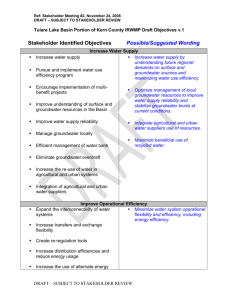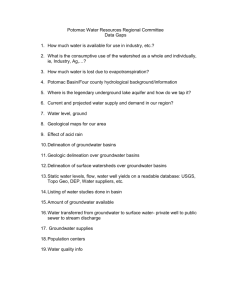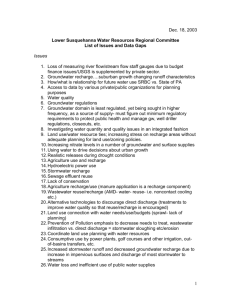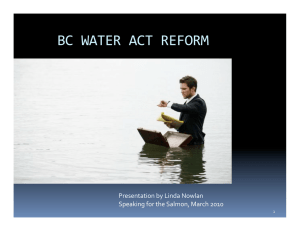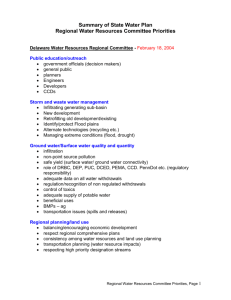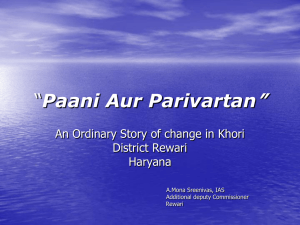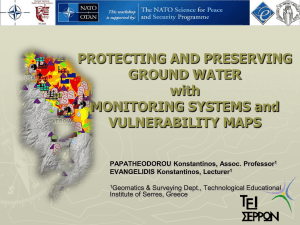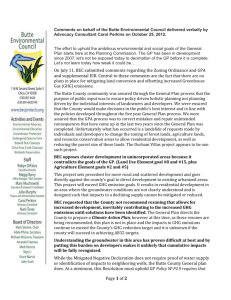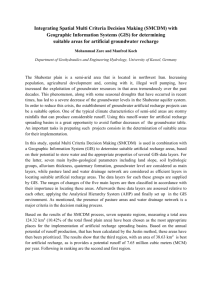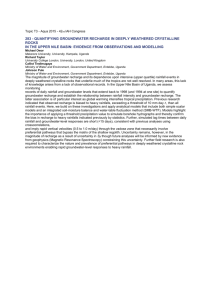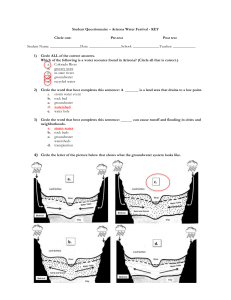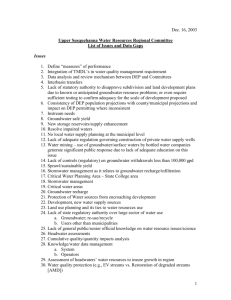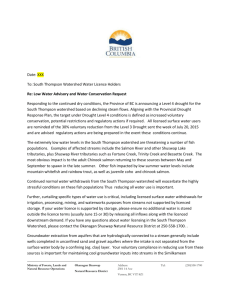Word
advertisement
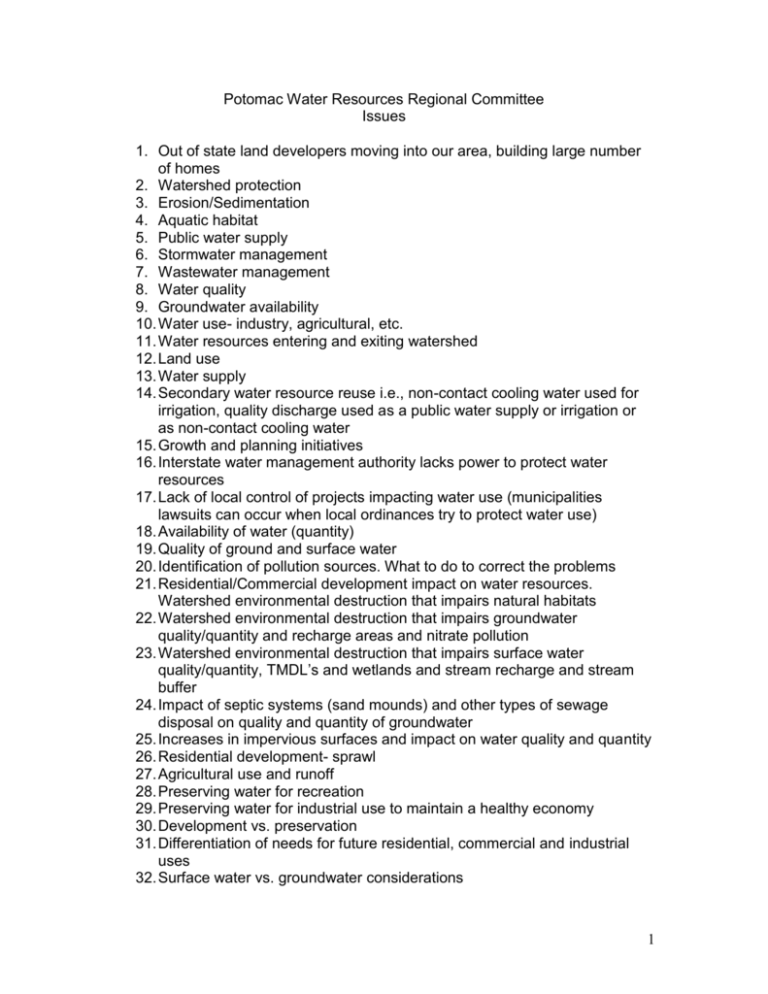
Potomac Water Resources Regional Committee Issues 1. Out of state land developers moving into our area, building large number of homes 2. Watershed protection 3. Erosion/Sedimentation 4. Aquatic habitat 5. Public water supply 6. Stormwater management 7. Wastewater management 8. Water quality 9. Groundwater availability 10. Water use- industry, agricultural, etc. 11. Water resources entering and exiting watershed 12. Land use 13. Water supply 14. Secondary water resource reuse i.e., non-contact cooling water used for irrigation, quality discharge used as a public water supply or irrigation or as non-contact cooling water 15. Growth and planning initiatives 16. Interstate water management authority lacks power to protect water resources 17. Lack of local control of projects impacting water use (municipalities lawsuits can occur when local ordinances try to protect water use) 18. Availability of water (quantity) 19. Quality of ground and surface water 20. Identification of pollution sources. What to do to correct the problems 21. Residential/Commercial development impact on water resources. Watershed environmental destruction that impairs natural habitats 22. Watershed environmental destruction that impairs groundwater quality/quantity and recharge areas and nitrate pollution 23. Watershed environmental destruction that impairs surface water quality/quantity, TMDL’s and wetlands and stream recharge and stream buffer 24. Impact of septic systems (sand mounds) and other types of sewage disposal on quality and quantity of groundwater 25. Increases in impervious surfaces and impact on water quality and quantity 26. Residential development- sprawl 27. Agricultural use and runoff 28. Preserving water for recreation 29. Preserving water for industrial use to maintain a healthy economy 30. Development vs. preservation 31. Differentiation of needs for future residential, commercial and industrial uses 32. Surface water vs. groundwater considerations 1 33. Human needs vs. environmental considerations 34. Growth and sustainable water supply 35. Continued groundwater development 36. Consumptive uses 37. Instream flow needs protection 38. Water short falls 39. Stormwater 40. Septic tank failures 41. No regional control/management of land use to conserve water resources 42. No realization by local governments for regional water budgets 43. Contamination of groundwater by industrial, agricultural and residential sources 44. Rapid growth of communities and proposed communities 45. Competition of growth with historical agricultural zone water use 46. Protect adequate basin supply for public health and allow for processing of PA produced commodities 47. Groundwater inventory 48. Population trends 49. Groundwater quality protection 50. Groundwater availability 51. Recharge areas 52. Development pressures 53. Water supply 54. Water quality 55. Water recharge 56. Sprawl and other land use changes that threaten availability and quality of water resources 57. Inadequate local and regional water resource management policies and capabilities 58. The reliability and availability of local-level data for planning and development 59. Accurate mapping of current and projected groundwater consumption by municipalities, light/heavy industries, high-density developments 60. Land planning with major emphasis on water availability and water usage 61. Accurate characterization on entire Potomac River Basin with respect to water supply potential for each major hydro geologic unit 62. Interstate development pressures 63. Fragmented local planning 64. Interplay of transportation infrastructure (roads) and accompanying development 2

